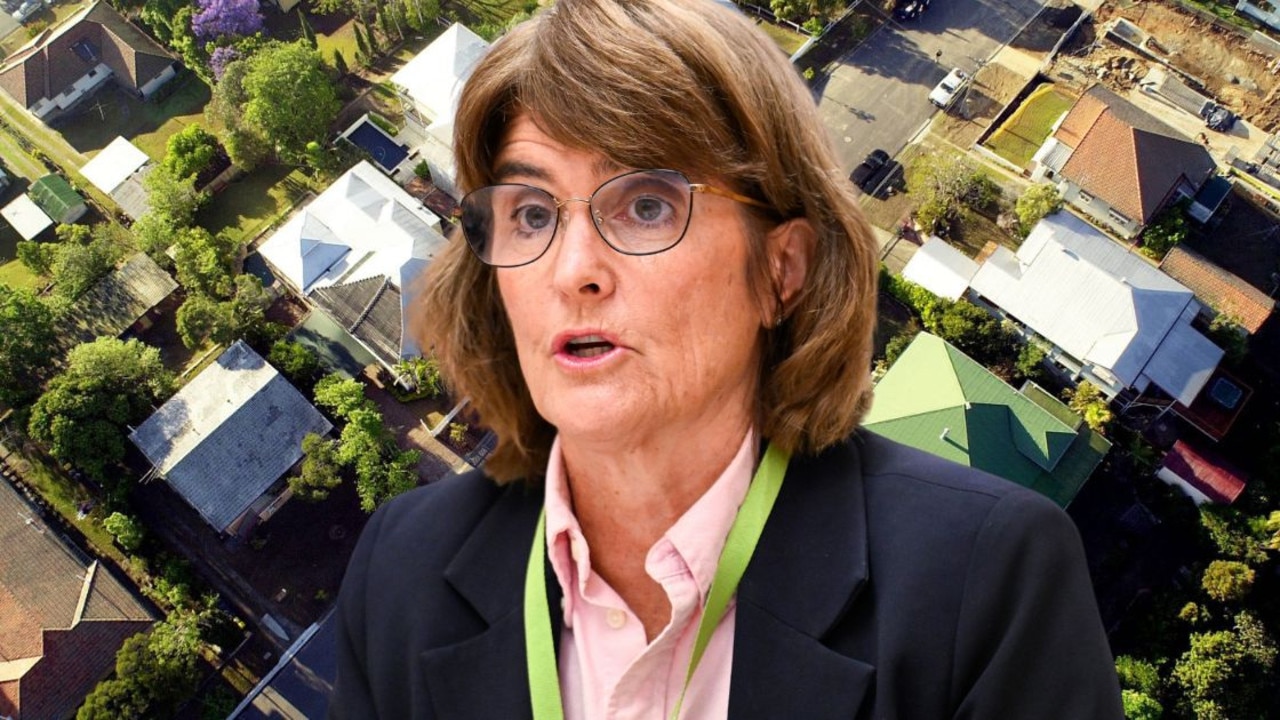Qld bushfires: Inside the nerve centre behind our fire fight
The frontline firies who managed to control massives blazes across the state last week are to be praised, but there was also another group of heroes working around-the-clock. This is their story.
CM Insight
Don't miss out on the headlines from CM Insight. Followed categories will be added to My News.
IN A ROOM on the outskirts of Brisbane, dozens of people stare at large screens.
It’s the afternoon of Thursday, September 5, and the screens display an array of technical data.
But a much simpler message has just been delivered by mother nature.
Qld bushfires: Farmers use last of their water to fight fires
What it was like to be on the frontline of the Peregian firestorm
The Granite Belt will bounce back from this week’s fires
Over 1400km north of Brisbane at Biboohra, Queensland has lost its first house to the bushfire season.
Over the next 120 hours conditions not seen in recorded history in the Sunshine State will destroy a further 21 properties from Stanthorpe to the Gold Coast hinterland up to Peregian Beach just south of Noosa.
The State Operations Centre (SOC) in the Emergency Services compound at Kedron has swelled with staff over the last few days.
There’s up to 40 people in the room now. The standard 12-hour shift is being stretched as fire conditions worsen.
A vast array of information from operations, logistics and planning to public messaging flows through the room, funnelled from the front line up to Queensland Fire and Emergency Services top brass.
Acting Chief Superintendent Kevin Reading works out of SOC as Queensland’s State Coordinator during bushfires.
He organises the river of information and approves resource movements throughout the state to battle the raging fires.
He describes the atmosphere in the room as “intense”.
“It got quite hectic there,” he says.
“There’s a lot of people coming and going. Depending on the operational tempo, it definitely becomes more intense.”
The SOC has been ramping up since the dire weather forecasts that sent fire danger indices off the charts became available.
Temperature records are showing early September is 10 degrees hotter than usual. There are roaring winds and a dearth of rain for the days, weeks and months ahead.
“On the 2nd of September, we started getting an eye on things and we started our preparations and understanding what it’s going to be for the coming days,” Reading says.
“We knew that we were going to get some pretty severe days with the conditions.
“We understood we had active fires on the ground leading into that. We were made aware early on that the conditions may become difficult, which then means the fires that are active and were likely to increase in intensity.
“We had a number of resources across the state all prepped and ready as things ramped up, which they obviously did.”
But the best preparations can go awry during bushfires. The QFES officers know this and strive to be “flexible and adaptable”
“With fire, you’re never going to know what it’s going to do,” Reading says.
“You can plan the best you can but there’s always going to be an element that is unpredictable that you’ve got react and adapt to.”
“The situation is always changing.”
WARNING SIGNS
At 2.45pm on Monday, September 2, QFES put out its first bushfire warning for the Gold Coast hinterland.
The fire at Sarabah, south of Canungra, had broken out earlier that day near Reining Road and while uncontained it was posing no threat to property.
There are three Bushfire warning levels in Queensland. From least to most severe it runs Advice - Watch and Act - Emergency Warning.
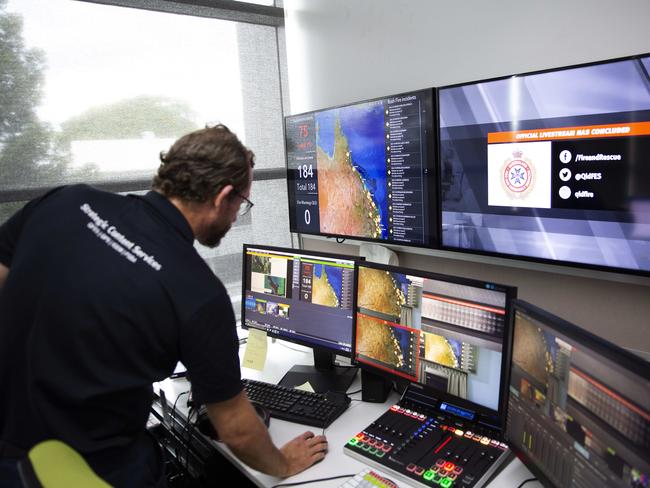
Warnings for the Gold Coast Hinterland filter out from the SOC over the next few days hovering between Advice and Watch and Act.
This changes on Friday.
At 4.15pm the first Emergency Warning is issued for Sarabah.
An out of control fire is bearing down on properties near Lamington National Park.
Residents are told to leave immediately as the fire “may pose a threat to all lives directly in its path”.
Less than two hours later another emergency warning – this one for people a few kilometres away near Beechmont – is sent.
The residents are told to seek shelter as it’s “too late to leave” and the fire is expected to have a “life-threatening impact” on the community.
As Friday stretches into Saturday repeated warnings are issued for residents to seek shelter or leave.
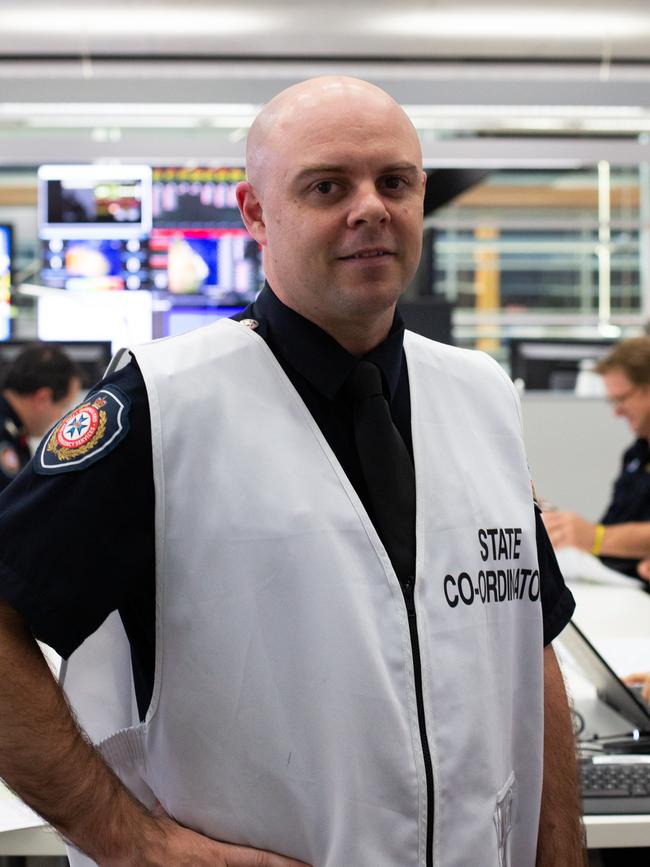
Much of the same is playing out 130 kilometres to the southwest.
Over the space of a few hours residents from Stanthorpe to those 20 km north at Dalveen are being menaced by a fast moving fire from the west.
“The fire is expected to have a significant and life-threatening impact on communities between Dalveen and Applethorpe,” a QFES warning at 12.45am states.
An hour earlier a large and fast-moving fire threatens Stanthorpe residents near the New England Highway area. A warning thunders SEEK SHELTER IMMEDIATELY.
The message is repeated at 3am.
What those messages can’t relay is the path of destruction by the wall of flames.
But when the sun comes up 17 homes have been lost – 10 in Sarabah and seven in Stanthorpe.
Among the victims is French marine explorer Alan Bourzali and his wife Agnes.
On the 49th anniversary of their arrival in Australia to the day, a howling desiccating
wind drives a firestorm through their Stanthorpe home.
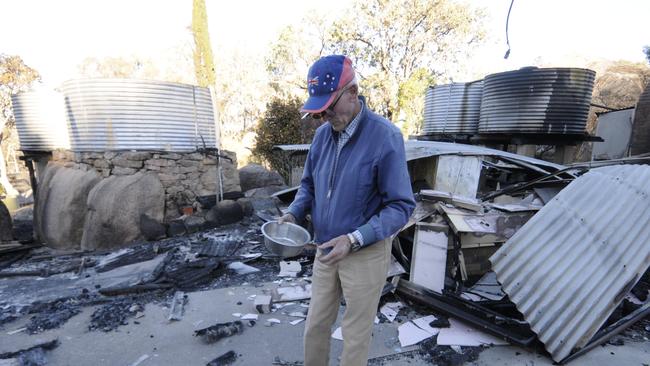
On the same street Lana Esterich fled with her nine year old daughter as the fire rages metres from their home. The fire rips through the property but amazingly the family home of 16 years is spared.
INTERSTATE BACK-UP
Back at the SOC the night had been spent managing resource requests from the fireground and collecting operational information from firefighters at the coalface.
A Large Air Tanker (LAT), with a 15,000 litre capacity, had been sought from NSW to drop flame retardant on the Sarabah fires. But that state is battling its own catastrophic fires just south of border in Tenterfield where the LAT is also needed. What QFES does have on loan from NSW is a reconnaissance aircraft that uses thermal imaging to measure a bushfires intensity.
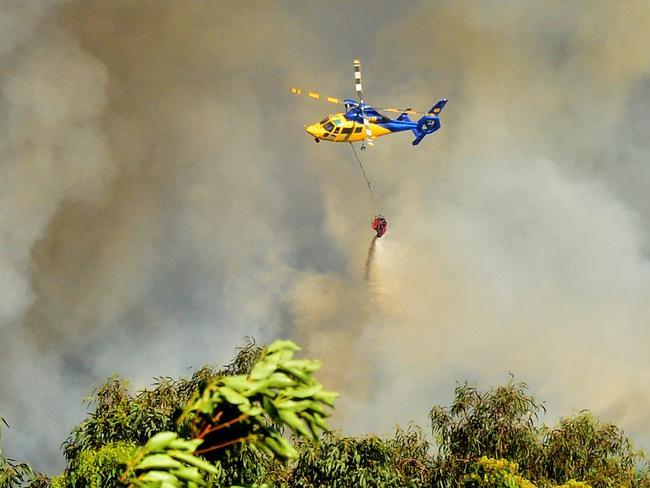
“That enables our predictive services to do modelling, which helps firefighters on the ground to better predict where the fires going and put better strategies in place in combat it,” Reading says.
The information also helps QFES decide when a community should be evacuated. It is only the second time it has been used in the state, the last occurring in the central Queensland fires of 2018.
The morning after fires staff the SOC are busy quenching the media’s thirst for information.
“Public information is a really big one,” he says.
“They’ve issued over 500 warnings as of (Thursday) from the start of this activity. That’s an awful lot of phone calls and an awful lot of information progressing through.”
But the fire event is far from over.
In the early hours of Sunday morning one of the Gold Coast’s most beloved hinterland lodges is gutted by fire.
Despite valiant attempts to save Binna Burra lodge, firefighters – whose heavy equipment was cut off by difficult terrain – have to abort the mission at 3am as conditions worsen.
The next day another emergency would unfold in the Gold Coast hinterland while a new firefront would open up hundreds of kilometres to the north.
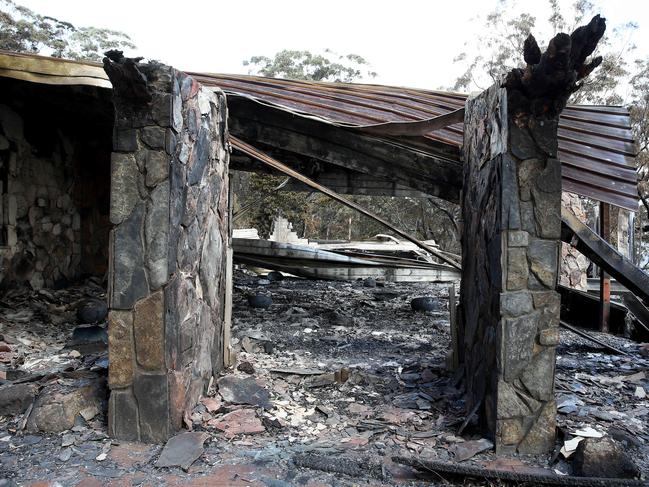
On Monday night more than a 100 people, and the 18 police sent to evacuate them, are forced to seek refuge in O’Reilly’s Rainforest Retreat in Lamington National Park.
A ferocious fire has quickly trapped them as they go to leave. A prayed-for easing of conditions allows them to escape with their lives.
Deputy Police Commissioner Steve Gollschewski notes the fires see “even the most trained can get caught out”.
EMBER STORM
On Monday night a small community wedged between Coolum and Noosa is experiencing conditions rarely seen in Queensland.
What unfolds is later described as “herculean” and a “miracle”.
At 5.30 PM a fire, allegedly lit by teenagers, is bearing down on Peregian Beach and surrounds including the Coolum State High School .
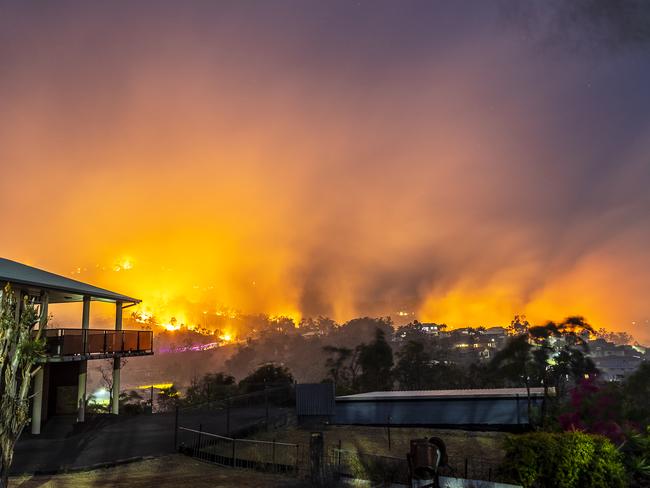
An hour later the fire worsens. Three hours later an Emergency Warning is broadcast and the area becomes a coastal ghostland as thousands evacuate.
Fleeing locals speak of a “golden blanket of embers”. Footage that shocks Queenslanders emerges of a horrifying “ember storm’. Some 300 firefighters work through the night to save the township and surrounds. Just one property – the home of 89-year-old widow Pam Murphy for 40 years – is lost.
Driving through Peregian Beach on Wednesday a senior police officer realises how close the fire came to being an “absolute catastrophic event”
“I don’t think we’ll realize until into the future just how they saved a town here,” he says of firefighters.
Reading says the firefight in Peregian was remarkable.
“The fire itself rapidly escalated, it was 4.30pm approximately when it started. We watched it ramping up pretty quickly,” he says.
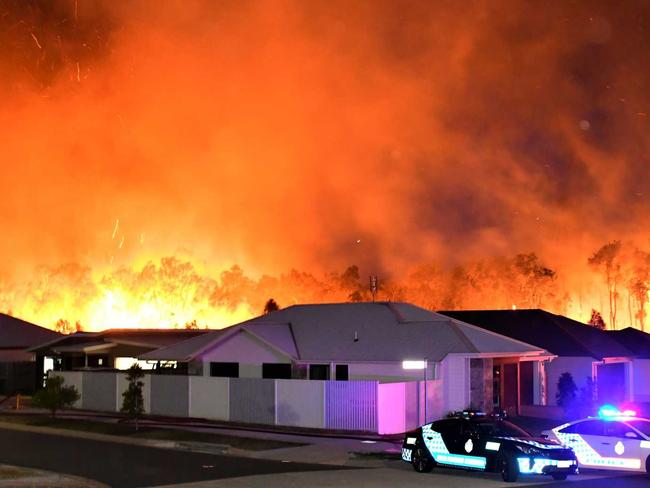
“The type of vegetation that fire went through and the wind … that’s what allowed it together so much momentum.”
On Tuesday the fire flares up again and Queensland sees LAT in action. It drops 15,000 litres of flame retardant gel.
“We saw the fire progressing, encroaching on one house in particular,” he says.
“(The LAT) was really effective, it directly saved that particular property. So that was a real standout for me.
“The other stand out was how everyone in the room comes together to try and help the community. We’re not out on the front line fighting the fire but there’s all that stuff that needs to happen in the background that the community will never see that I value as well.”
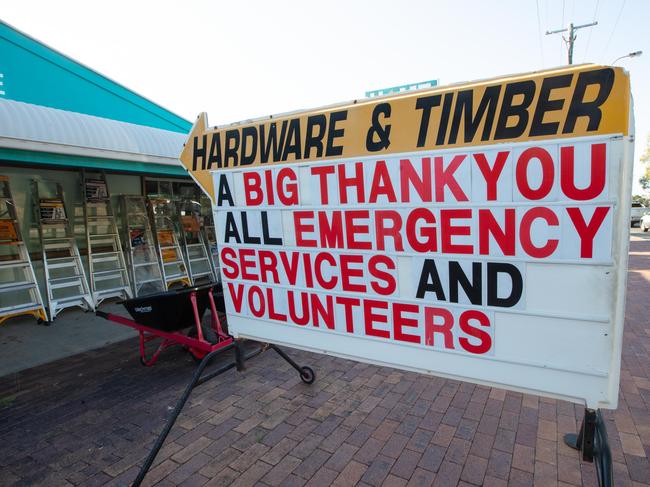
The frantic tempo has temporarily eased in the SOC has personnel prepare for the “next campaign”.
“This will be a long season without a doubt,” Reading predicts.
patrick.billings@news.com.au

